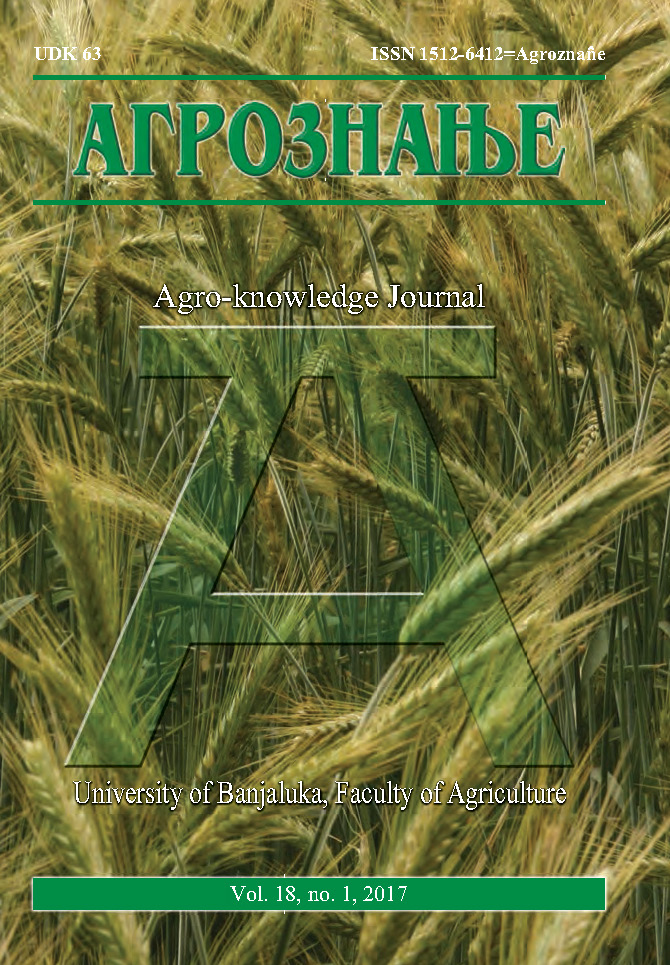Capability Classification of the Land Belonging to the Bužim Municipality
DOI:
https://doi.org/10.7251/AGREN1701037IAbstract
One of the primary soil functions is the production of food and raw materials, but the soil is used for ther purposes as well, outside the sphere of agricultural production, e.g.road construction and housing, exploitation of mineral resources. The research in this paper, appropriate agricultural land capability classification, was carried out in the Bužim Municipality using the guideline of unique methodology regarding the classification of agricultural land in the rating categories and criteria for individual soil properties, based on which land capability classes are determined. As a result of the research, six agricultural land capability classes (LCC) and land capability subclasses (LCS), ranging from III to VII, were determined, and areas were also marked as forest and built land. The most common land areas were marked under the VI LCC with the total area of 18.99% of the territory of the municipality. The V LCC was represented with a percentage of 11.65, while the IVa LCS was only represented with 1.02%.

